- Home
- H. G. Wells
The War of the Worlds Page 20
The War of the Worlds Read online
Page 20
CHAPTER TWO
WHAT WE SAW FROM THE RUINED HOUSE
After eating we crept back to the scullery, and there I must havedozed again, for when presently I looked round I was alone. Thethudding vibration continued with wearisome persistence. I whisperedfor the curate several times, and at last felt my way to the door ofthe kitchen. It was still daylight, and I perceived him across theroom, lying against the triangular hole that looked out upon theMartians. His shoulders were hunched, so that his head was hiddenfrom me.
I could hear a number of noises almost like those in an engineshed; and the place rocked with that beating thud. Through theaperture in the wall I could see the top of a tree touched with goldand the warm blue of a tranquil evening sky. For a minute or so Iremained watching the curate, and then I advanced, crouching andstepping with extreme care amid the broken crockery that littered thefloor.
I touched the curate's leg, and he started so violently that a massof plaster went sliding down outside and fell with a loud impact. Igripped his arm, fearing he might cry out, and for a long time wecrouched motionless. Then I turned to see how much of our rampartremained. The detachment of the plaster had left a vertical slit openin the debris, and by raising myself cautiously across a beam I wasable to see out of this gap into what had been overnight a quietsuburban roadway. Vast, indeed, was the change that we beheld.
The fifth cylinder must have fallen right into the midst of thehouse we had first visited. The building had vanished, completelysmashed, pulverised, and dispersed by the blow. The cylinder lay nowfar beneath the original foundations--deep in a hole, already vastlylarger than the pit I had looked into at Woking. The earth all roundit had splashed under that tremendous impact--"splashed" is the onlyword--and lay in heaped piles that hid the masses of the adjacenthouses. It had behaved exactly like mud under the violent blow of ahammer. Our house had collapsed backward; the front portion, even onthe ground floor, had been destroyed completely; by a chance thekitchen and scullery had escaped, and stood buried now under soil andruins, closed in by tons of earth on every side save towards thecylinder. Over that aspect we hung now on the very edge of the greatcircular pit the Martians were engaged in making. The heavy beatingsound was evidently just behind us, and ever and again a bright greenvapour drove up like a veil across our peephole.
The cylinder was already opened in the centre of the pit, and onthe farther edge of the pit, amid the smashed and gravel-heapedshrubbery, one of the great fighting-machines, deserted by itsoccupant, stood stiff and tall against the evening sky. At first Iscarcely noticed the pit and the cylinder, although it has beenconvenient to describe them first, on account of the extraordinaryglittering mechanism I saw busy in the excavation, and on account ofthe strange creatures that were crawling slowly and painfully acrossthe heaped mould near it.
The mechanism it certainly was that held my attention first. Itwas one of those complicated fabrics that have since been calledhandling-machines, and the study of which has already given such anenormous impetus to terrestrial invention. As it dawned upon mefirst, it presented a sort of metallic spider with five jointed,agile legs, and with an extraordinary number of jointed levers, bars,and reaching and clutching tentacles about its body. Most of itsarms were retracted, but with three long tentacles it was fishingout a number of rods, plates, and bars which lined the covering andapparently strengthened the walls of the cylinder. These, as itextracted them, were lifted out and deposited upon a level surfaceof earth behind it.
Its motion was so swift, complex, and perfect that at first I didnot see it as a machine, in spite of its metallic glitter. Thefighting-machines were coordinated and animated to an extraordinarypitch, but nothing to compare with this. People who have never seenthese structures, and have only the ill-imagined efforts of artists orthe imperfect descriptions of such eye-witnesses as myself to go upon,scarcely realise that living quality.
I recall particularly the illustration of one of the firstpamphlets to give a consecutive account of the war. The artist hadevidently made a hasty study of one of the fighting-machines, andthere his knowledge ended. He presented them as tilted, stifftripods, without either flexibility or subtlety, and with analtogether misleading monotony of effect. The pamphlet containingthese renderings had a considerable vogue, and I mention them heresimply to warn the reader against the impression they may havecreated. They were no more like the Martians I saw in action than aDutch doll is like a human being. To my mind, the pamphlet would havebeen much better without them.
At first, I say, the handling-machine did not impress me as amachine, but as a crablike creature with a glittering integument, thecontrolling Martian whose delicate tentacles actuated its movementsseeming to be simply the equivalent of the crab's cerebral portion.But then I perceived the resemblance of its grey-brown, shiny,leathery integument to that of the other sprawling bodies beyond, andthe true nature of this dexterous workman dawned upon me. With thatrealisation my interest shifted to those other creatures, the realMartians. Already I had had a transient impression of these, and thefirst nausea no longer obscured my observation. Moreover, I wasconcealed and motionless, and under no urgency of action.
They were, I now saw, the most unearthly creatures it is possibleto conceive. They were huge round bodies--or, rather, heads--aboutfour feet in diameter, each body having in front of it a face. Thisface had no nostrils--indeed, the Martians do not seem to have had anysense of smell, but it had a pair of very large dark-coloured eyes,and just beneath this a kind of fleshy beak. In the back of this heador body--I scarcely know how to speak of it--was the single tighttympanic surface, since known to be anatomically an ear, though itmust have been almost useless in our dense air. In a group round themouth were sixteen slender, almost whiplike tentacles, arranged in twobunches of eight each. These bunches have since been named ratheraptly, by that distinguished anatomist, Professor Howes, the _hands_.Even as I saw these Martians for the first time they seemed to beendeavouring to raise themselves on these hands, but of course, withthe increased weight of terrestrial conditions, this was impossible.There is reason to suppose that on Mars they may have progressed uponthem with some facility.
The internal anatomy, I may remark here, as dissection has sinceshown, was almost equally simple. The greater part of the structurewas the brain, sending enormous nerves to the eyes, ear, and tactiletentacles. Besides this were the bulky lungs, into which the mouthopened, and the heart and its vessels. The pulmonary distress causedby the denser atmosphere and greater gravitational attraction was onlytoo evident in the convulsive movements of the outer skin.
And this was the sum of the Martian organs. Strange as it may seemto a human being, all the complex apparatus of digestion, which makesup the bulk of our bodies, did not exist in the Martians. They wereheads--merely heads. Entrails they had none. They did not eat, muchless digest. Instead, they took the fresh, living blood of othercreatures, and _injected_ it into their own veins. I have myself seenthis being done, as I shall mention in its place. But, squeamish as Imay seem, I cannot bring myself to describe what I could not endureeven to continue watching. Let it suffice to say, blood obtained froma still living animal, in most cases from a human being, was rundirectly by means of a little pipette into the recipient canal. . . .
The bare idea of this is no doubt horribly repulsive to us, but atthe same time I think that we should remember how repulsive ourcarnivorous habits would seem to an intelligent rabbit.
The physiological advantages of the practice of injection areundeniable, if one thinks of the tremendous waste of human time andenergy occasioned by eating and the digestive process. Our bodies arehalf made up of glands and tubes and organs, occupied in turningheterogeneous food into blood. The digestive processes and theirreaction upon the nervous system sap our strength and colour ourminds. Men go happy or miserable as they have healthy or unhealthylivers, or sound gastric glands. But the Martians were lifted aboveall these organic fluctuations of mo
od and emotion.
Their undeniable preference for men as their source of nourishmentis partly explained by the nature of the remains of the victims theyhad brought with them as provisions from Mars. These creatures, tojudge from the shrivelled remains that have fallen into human hands,were bipeds with flimsy, silicious skeletons (almost like those of thesilicious sponges) and feeble musculature, standing about six feethigh and having round, erect heads, and large eyes in flinty sockets.Two or three of these seem to have been brought in each cylinder, andall were killed before earth was reached. It was just as well forthem, for the mere attempt to stand upright upon our planet would havebroken every bone in their bodies.
And while I am engaged in this description, I may add in this placecertain further details which, although they were not all evident tous at the time, will enable the reader who is unacquainted with themto form a clearer picture of these offensive creatures.
In three other points their physiology differed strangely fromours. Their organisms did not sleep, any more than the heart of mansleeps. Since they had no extensive muscular mechanism to recuperate,that periodical extinction was unknown to them. They had little orno sense of fatigue, it would seem. On earth they could never havemoved without effort, yet even to the last they kept in action. Intwenty-four hours they did twenty-four hours of work, as even on earthis perhaps the case with the ants.
In the next place, wonderful as it seems in a sexual world, theMartians were absolutely without sex, and therefore without any of thetumultuous emotions that arise from that difference among men. Ayoung Martian, there can now be no dispute, was really born upon earthduring the war, and it was found attached to its parent, partially_budded_ off, just as young lilybulbs bud off, or like the young animalsin the fresh-water polyp.
In man, in all the higher terrestrial animals, such a method ofincrease has disappeared; but even on this earth it was certainly theprimitive method. Among the lower animals, up even to those firstcousins of the vertebrated animals, the Tunicates, the two processesoccur side by side, but finally the sexual method superseded itscompetitor altogether. On Mars, however, just the reverse hasapparently been the case.
It is worthy of remark that a certain speculative writer ofquasi-scientific repute, writing long before the Martian invasion, didforecast for man a final structure not unlike the actual Martiancondition. His prophecy, I remember, appeared in November orDecember, 1893, in a long-defunct publication, the _Pall Mall Budget_,and I recall a caricature of it in a pre-Martian periodical called_Punch_. He pointed out--writing in a foolish, facetious tone--that theperfection of mechanical appliances must ultimately supersede limbs;the perfection of chemical devices, digestion; that such organs ashair, external nose, teeth, ears, and chin were no longer essentialparts of the human being, and that the tendency of natural selectionwould lie in the direction of their steady diminution through thecoming ages. The brain alone remained a cardinal necessity. Only oneother part of the body had a strong case for survival, and that wasthe hand, "teacher and agent of the brain." While the rest of thebody dwindled, the hands would grow larger.
There is many a true word written in jest, and here in the Martianswe have beyond dispute the actual accomplishment of such a suppressionof the animal side of the organism by the intelligence. To me it isquite credible that the Martians may be descended from beings notunlike ourselves, by a gradual development of brain and hands (thelatter giving rise to the two bunches of delicate tentacles at last)at the expense of the rest of the body. Without the body the brainwould, of course, become a mere selfish intelligence, without any ofthe emotional substratum of the human being.
The last salient point in which the systems of these creaturesdiffered from ours was in what one might have thought a very trivialparticular. Micro-organisms, which cause so much disease and pain onearth, have either never appeared upon Mars or Martian sanitaryscience eliminated them ages ago. A hundred diseases, all the feversand contagions of human life, consumption, cancers, tumours and suchmorbidities, never enter the scheme of their life. And speaking ofthe differences between the life on Mars and terrestrial life, I mayallude here to the curious suggestions of the red weed.
Apparently the vegetable kingdom in Mars, instead of having greenfor a dominant colour, is of a vivid blood-red tint. At any rate, theseeds which the Martians (intentionally or accidentally) brought withthem gave rise in all cases to red-coloured growths. Only that knownpopularly as the red weed, however, gained any footing in competitionwith terrestrial forms. The red creeper was quite a transitorygrowth, and few people have seen it growing. For a time, however, thered weed grew with astonishing vigour and luxuriance. It spread upthe sides of the pit by the third or fourth day of our imprisonment,and its cactus-like branches formed a carmine fringe to the edges ofour triangular window. And afterwards I found it broadcast throughoutthe country, and especially wherever there was a stream of water.
The Martians had what appears to have been an auditory organ, asingle round drum at the back of the head-body, and eyes with a visualrange not very different from ours except that, according to Philips,blue and violet were as black to them. It is commonly supposed thatthey communicated by sounds and tentacular gesticulations; this isasserted, for instance, in the able but hastily compiled pamphlet(written evidently by someone not an eye-witness of Martian actions)to which I have already alluded, and which, so far, has been the chiefsource of information concerning them. Now no surviving human beingsaw so much of the Martians in action as I did. I take no credit tomyself for an accident, but the fact is so. And I assert that Iwatched them closely time after time, and that I have seen four, five,and (once) six of them sluggishly performing the most elaboratelycomplicated operations together without either sound or gesture. Theirpeculiar hooting invariably preceded feeding; it had no modulation,and was, I believe, in no sense a signal, but merely the expiration ofair preparatory to the suctional operation. I have a certain claim toat least an elementary knowledge of psychology, and in this matter Iam convinced--as firmly as I am convinced of anything--that theMartians interchanged thoughts without any physical intermediation.And I have been convinced of this in spite of strong preconceptions.Before the Martian invasion, as an occasional reader here or there mayremember, I had written with some little vehemence against thetelepathic theory.
The Martians wore no clothing. Their conceptions of ornament anddecorum were necessarily different from ours; and not only were theyevidently much less sensible of changes of temperature than we are,but changes of pressure do not seem to have affected their health atall seriously. Yet though they wore no clothing, it was in the otherartificial additions to their bodily resources that their greatsuperiority over man lay. We men, with our bicycles and road-skates,our Lilienthal soaring-machines, our guns and sticks and so forth, arejust in the beginning of the evolution that the Martians have workedout. They have become practically mere brains, wearing differentbodies according to their needs just as men wear suits of clothes andtake a bicycle in a hurry or an umbrella in the wet. And of theirappliances, perhaps nothing is more wonderful to a man than thecurious fact that what is the dominant feature of almost all humandevices in mechanism is absent--the _wheel_ is absent; among all thethings they brought to earth there is no trace or suggestion of theiruse of wheels. One would have at least expected it in locomotion. Andin this connection it is curious to remark that even on this earthNature has never hit upon the wheel, or has preferred other expedientsto its development. And not only did the Martians either not know of(which is incredible), or abstain from, the wheel, but in theirapparatus singularly little use is made of the fixed pivot orrelatively fixed pivot, with circular motions thereabout confinedto one plane. Almost all the joints of the machinery present acomplicated system of sliding parts moving over small but beautifullycurved friction bearings. And while upon this matter of detail, it isremarkable that the long leverages of their machines are in most casesactuated by a sort of sham musculatu
re of the disks in an elasticsheath; these disks become polarised and drawn closely and powerfullytogether when traversed by a current of electricity. In this way thecurious parallelism to animal motions, which was so striking anddisturbing to the human beholder, was attained. Such quasi-musclesabounded in the crablike handling-machine which, on my first peepingout of the slit, I watched unpacking the cylinder. It seemedinfinitely more alive than the actual Martians lying beyond it in thesunset light, panting, stirring ineffectual tentacles, and movingfeebly after their vast journey across space.
While I was still watching their sluggish motions in the sunlight,and noting each strange detail of their form, the curate reminded meof his presence by pulling violently at my arm. I turned to ascowling face, and silent, eloquent lips. He wanted the slit, whichpermitted only one of us to peep through; and so I had to foregowatching them for a time while he enjoyed that privilege.
When I looked again, the busy handling-machine had already puttogether several of the pieces of apparatus it had taken out of thecylinder into a shape having an unmistakable likeness to its own; anddown on the left a busy little digging mechanism had come into view,emitting jets of green vapour and working its way round the pit,excavating and embanking in a methodical and discriminating manner.This it was which had caused the regular beating noise, and therhythmic shocks that had kept our ruinous refuge quivering. It pipedand whistled as it worked. So far as I could see, the thing waswithout a directing Martian at all.

 Ann Veronica: A Modern Love Story
Ann Veronica: A Modern Love Story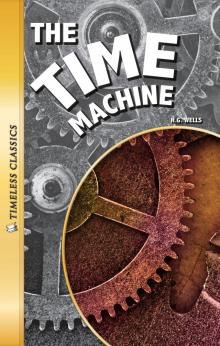 The Time Machine
The Time Machine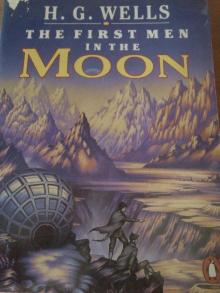 The First Men in the Moon
The First Men in the Moon The Stolen Bacillus and Other Incidents
The Stolen Bacillus and Other Incidents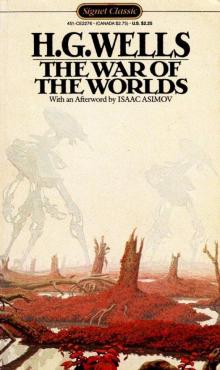 The War of the Worlds
The War of the Worlds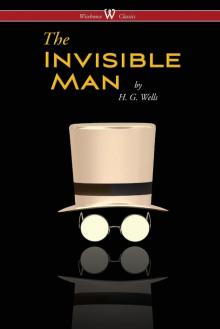 The Invisible Man: A Grotesque Romance
The Invisible Man: A Grotesque Romance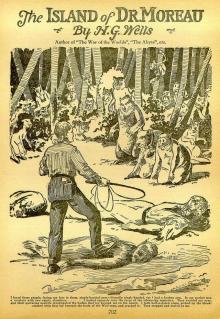 The Island of Doctor Moreau
The Island of Doctor Moreau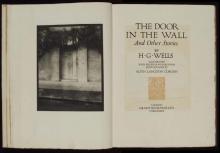 The Door in the Wall, and Other Stories
The Door in the Wall, and Other Stories The Best Science Fiction Stories of H G Wells
The Best Science Fiction Stories of H G Wells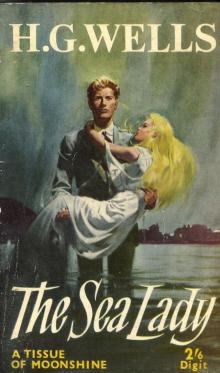 The Sea Lady
The Sea Lady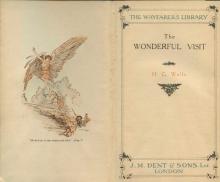 The Wonderful Visit
The Wonderful Visit Love and Mr. Lewisham
Love and Mr. Lewisham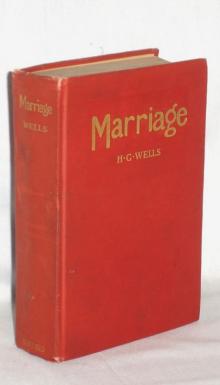 Marriage
Marriage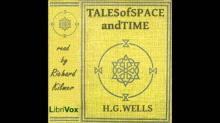 Tales of Space and Time
Tales of Space and Time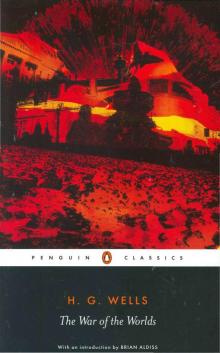 The War of the Worlds (Penguin Classics)
The War of the Worlds (Penguin Classics) Twelve Stories and a Dream
Twelve Stories and a Dream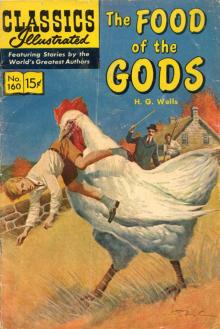 The Food of the Gods and How It Came to Earth
The Food of the Gods and How It Came to Earth Tono-Bungay
Tono-Bungay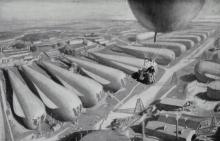 The War in the Air
The War in the Air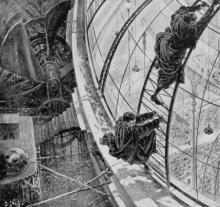 The Sleeper Awakes
The Sleeper Awakes The Country of the Blind and Other Stories
The Country of the Blind and Other Stories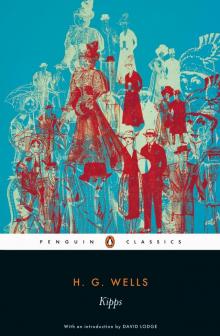 Kipps
Kipps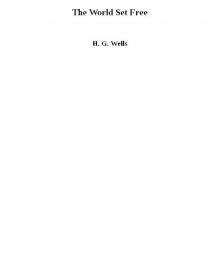 The World Set Free
The World Set Free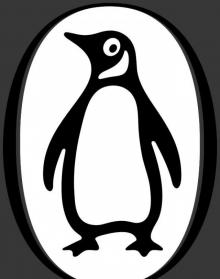 The Country of the Blind and other Selected Stories
The Country of the Blind and other Selected Stories Ann Veronica
Ann Veronica Ann Veronica a Modern Love Story
Ann Veronica a Modern Love Story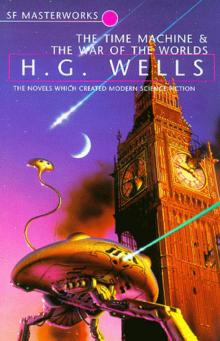 The Time Machine and The War of the Worlds
The Time Machine and The War of the Worlds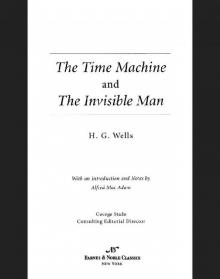 Time Machine and The Invisible Man (Barnes & Noble Classics Series)
Time Machine and The Invisible Man (Barnes & Noble Classics Series)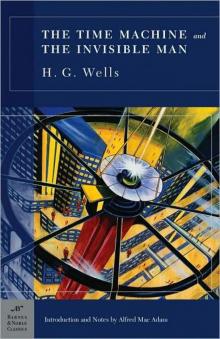 The Time Machine and The Invisible Man
The Time Machine and The Invisible Man The Island of Dr. Moreau
The Island of Dr. Moreau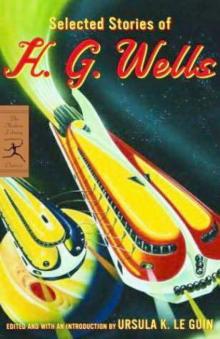 Selected Stories of H. G. Wells
Selected Stories of H. G. Wells Island of Dr. Moreau
Island of Dr. Moreau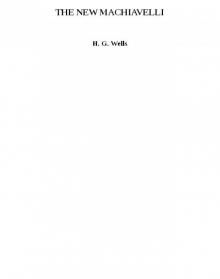 THE NEW MACHIAVELLI
THE NEW MACHIAVELLI